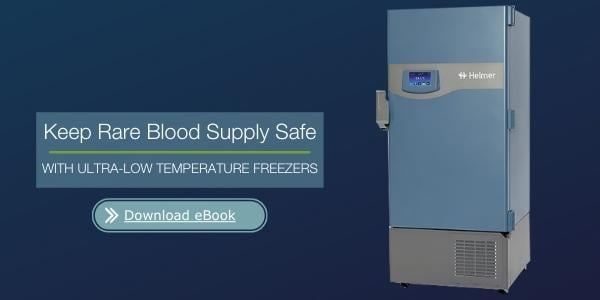Safe blood transfusions rely on accurate typing and cross-matching, which ensures compatibility between the donor’s and the recipient’s blood. An individual’s blood type is based on whether certain proteins are present on their red blood cells. These proteins, called antigens, trigger a patient’s immune system in response to an incompatible transfusion, which can be life-threatening.
A blood type is considered rare when it occurs in fewer than 1 in 1,000 people. Someone with a rare blood type may lack an antigen that most others have, or have an antigen that most others do not. For individuals with rare blood types, it may be difficult or even impossible to get a transfusion if needed.
A recent survey found there are more than 10,000 requests for rare blood in the United States each year, a number that was substantially higher than expected. Demand for rare blood is likely even higher, since not all requests are captured in the data. This new information reinforces the importance of rare blood inventories as well as the need to increase rare donor screening.
AABB Standards state rare red blood cells should be stored below -65°C for up to 10 years. These units may be kept indefinitely due to their scarcity and value. Safeguarding rare blood during storage is critical to patients who need to be transfused with this precious, life-saving product.
There are several important points to consider when selecting an ultra-low freezer and accessories for freezing and storing rare blood. The first is the reliability of the freezer. Considering the length of the storage period, a key factor is protecting rare units from temperature excursions caused by refrigeration system issues. In addition, minimizing the number of times the units must be moved because of service calls (or even defrost events) helps prevent exposure to out-of-range temperatures and the risk of damage due to unnecessary handling.
Minimizing handling can also be accomplished when rare blood canisters are accessible and well organized inside the freezer, reducing the need to move canisters while sorting through stacks. Vertical storage racks and canisters designed for this purpose help maximize storage space while reducing the amount of handling a unit must undergo during its lifespan. This also helps to mitigate the risk of damage.
Another consideration is the method used to freeze the rare blood cells. One of the methods described in the AABB Technical Manual (20th Edition, Method 6-6) is the Meryman Method. This method requires glycerolized RBCs be placed in a canister and frozen to -65°C or colder in a flat position. Specially designed horizontal racks can assist with the flat freezing method.
Other Blogs You Might Be Interested In...
- Helmer Scientific Plasma Freezers Recognized by AABB Standards-Compliant Product Evaluation (SCoPE) Program
- Video Illustrates the Benefits of Reliable & Efficient Platelet Storage
- U.S. Blood Centers Launch the Nation’s First Emergency Blood Reserve
- Video Series: See How the i.C3® Information Center Supports Blood Bank Compliance
Selecting the right solution for storing your rare red blood cells means this precious resource will be safeguarded from adverse conditions. Learning what to consider in an ultra-low freezer and rare blood accessories will help ensure you have a secure storage environment that also minimizes handling risks.
References:
Standards for Blood Banks and Transfusion Services, AABB, 32nd Edition
Technical Manual, AABB, 20th Edition





